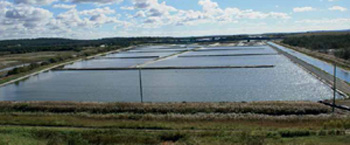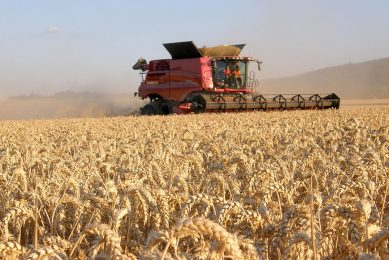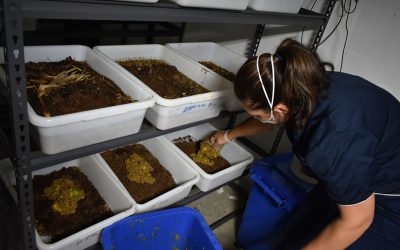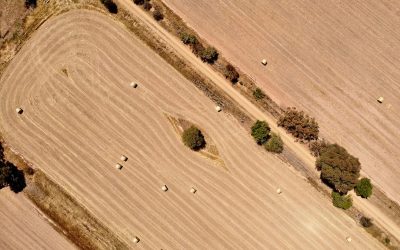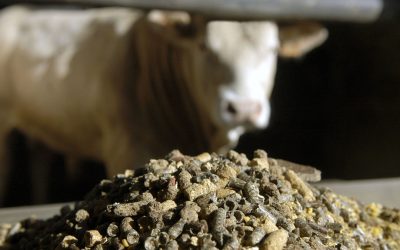By: Emmy Koeleman
While the retail industry is feeling the pinch of the economic crisis, prawn farmers in Australia say business opportunities for them are pretty promising. According to the Australian Financial Review, Australians consume at least 6% more seafood today than they did 12 years ago. This is because the price of prawns has remained stable in real terms for more than a decade while overall food costs have risen greatly. Therefore, consumers appear to view prawns as an affordable seafood choice when tightening their belts. Also the health benefit awareness in western countries increases the consumption of prawns and seafood in general. At the same time Australia’s commercial fishing grounds and allowable catch have been significantly reduced, which has increased the number of farmed prawn facilities across the country.
All these trends are –all in their own way- contributing to the growth of the Australian prawn industry. This has been reflected in a production increase of approximately 30%, from an annual production of 2,950 tonnes in 2007-08 to 3,900 tonnes in 2008-09. And as prices and demand have been very strong the last year, the total volume of the production went up from A$41m (€24.1m) to A$55m (€32.5m).
One farm, 47 ponds
Compared to the 25,000 tonnes of prawns imported from China, Vietnam and Thailand each year, the 3,900 tonnes of produced in Australia is still a quite small part of total global production. However, the prawn sector in Australia is considered as one of the largest aquaculture sectors in Australia behind pearl farming, tuna and salmon with considerable potential to grow. Australian farms are located in four states – New South Wales, Queensland, Northern Territory and Western Australia. Especially tropical Queensland, home to “Gold Coast Tiger Prawns”, part of “Gold Coast Marine Aquaculture” is a perfect location for production, due to the available land space and climate.
One particular farm is located near the mouth of the Logan River in Woongoolba and owned and operated by the Herbst family who have lived and farmed in the area since their forefathers settled there in 1863. The farm is 50 hectares including 47 ponds. The annual harvest is 400 tonnes, around 10% of the total tiger prawn production in Australia. The prawn farm was established in 1986 when the owner Noel Herbst decided to diversify and try a new industry, the growing of farmed prawns. The farm is fully integrated meaning that it produces its own breeding stock. In the 47 big ponds, the little ones grow out to 35 grams in 4-6 months (the feed conversion rate lies between 1.3 and 1.8). Harvesting is done from February to April and then sold to retail, wholesale, the public or
goes for export (mainly Japan). The fact that the shrimps are also very tasty is proven in the fact that the farm has received several awards including the Beenleigh Business Champion of Champions Award and 11 golden medals at the Sydney Royal Fine Food Show.
Grow to full potential
This farm in Woongoolba is a great example of ambitious entrepreneurship and willingness to grow and fight the competition from Asian imports. According to Nick Moore, president of the Australian Prawn Farmers Association,
the sector has just had one of its best years ever and acknowledges that research combined with good farm management practices have started to pay off. He also sees continued growth of Australia’s prawn farming aquaculture sector. But increasing competition from Asian countries remains a problem. “The imported products are half the price of locally produced prawns, so the farmers have to compete and keep the prices down”, Moore explained. Although some sections of the government are very supportive and assist with training, research funding, marketing etc, the biggest problem comes with the government’s attitude towards these cheap imports. “We pay tariffs to send prawns to almost all countries (especially China) and when products enter Australia there are no return tariffs. This completely imbalances prices”, explains Moore. But when the Australian prawn industry keeps on putting effort in the application of new technologies and environmental protection measures, it can certainly grow to its full potential. It is safe to say that the Australian Prawn Association is positive as it has set a goal of $200 million in farm gate sales by 2010.
farmed in clean seawater ponds around Australia’s northern coastline. Penaeus monodon (common names include giant tiger prawn, jumbo tiger prawn, black tiger prawn, leader prawn, sugpo and grass prawn) is a marine crustacean that is widely reared for food.
The natural distribution is Indo-West-Pacific, ranging from the eastern coast of Africa, the Arabian Peninsula, as far as South-east Asia, and the Sea of Japan. They can also be found in eastern Australia, and a small number have colonised the Mediterranean Sea via the Suez Canal. Further invasive populations have become established in Hawaii and the Atlantic coast of the USA (Florida, Georgia and South Carolina). In the world, over 900,000 tonnes are consumed annually, two-thirds of it coming from farming, chiefly in south-east Asia.
Source: Feed Mix magazine Volume 17 No 5
